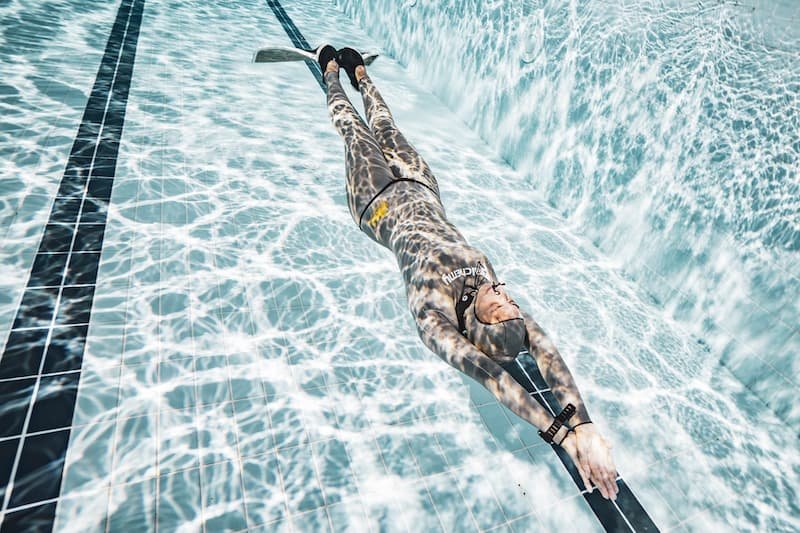
 Nick Pelios
Freediver, Creator
Nick Pelios
Freediver, Creator

 Nick Pelios
Freediver, Creator
Nick Pelios
Freediver, Creator
In the world of freediving, where every movement counts, buoyancy plays a critical role in achieving maximum efficiency and performance. Yet, according to renowned freediver Linda Paganelli, the importance of maintaining correct buoyancy remains widely overlooked, even among seasoned competitors.
Paganelli, a deep freediver with extensive experience, stresses that incorrect buoyancy can significantly hamper a diver's ability to move efficiently through the water. She highlights the common pitfalls, such as improper weighting, which force divers to expend unnecessary energy to maintain their trajectory. "Incorrect weighting means constantly correcting direction to advance horizontally," explains Paganelli. "This results in wasted energy and oxygen, as divers struggle to swim forward without veering off course." Paganelli underscores the need for precise buoyancy adjustments to ensure that divers utilize their limited energy and oxygen solely for forward propulsion. She recounts personal experiences where excess weight led to hypoxia during dives that should have been effortless.
One of the primary challenges, according to Paganelli, lies in accurately assessing buoyancy. She warns against common errors, such as surfacing before coming to a complete stop, which masks true buoyancy levels. To remedy this, she advocates for a simple approach: "Do not glide and close your eyes". However, Paganelli acknowledges that achieving optimal buoyancy often requires multiple adjustments. She emphasizes the importance of meticulous weight distribution, noting that being neutral doesn't necessarily equate to perfect horizontal alignment. "Your body's buoyancy is influenced by its composition and weight distribution," says Paganelli. "Women, for instance, may require different weight distributions due to their body composition compared to men."

Paganelli offers practical solutions for addressing buoyancy issues, including creative adjustments such as adding or removing weight and utilizing neoprene accessories. She stresses the importance of mastering pool buoyancy early on to prevent the development of bad habits that can hinder performance in deeper dives. In response to common misconceptions, Paganelli asserts that beginner-level instruction is tailored to basic skills and safety, leaving room for advanced techniques to be learned and refined over time. "Just because you learned one way as a beginner doesn't mean it's sufficient for competitive-level freediving," says Paganelli. "Continuous growth and refinement are essential for mastering the sport."
In conclusion, Paganelli urges freedivers to prioritize correct buoyancy as a foundational skill, essential for unlocking their full potential in the water. With meticulous attention to detail and a commitment to ongoing improvement, divers can optimize their performance and minimize challenges in the depths below.